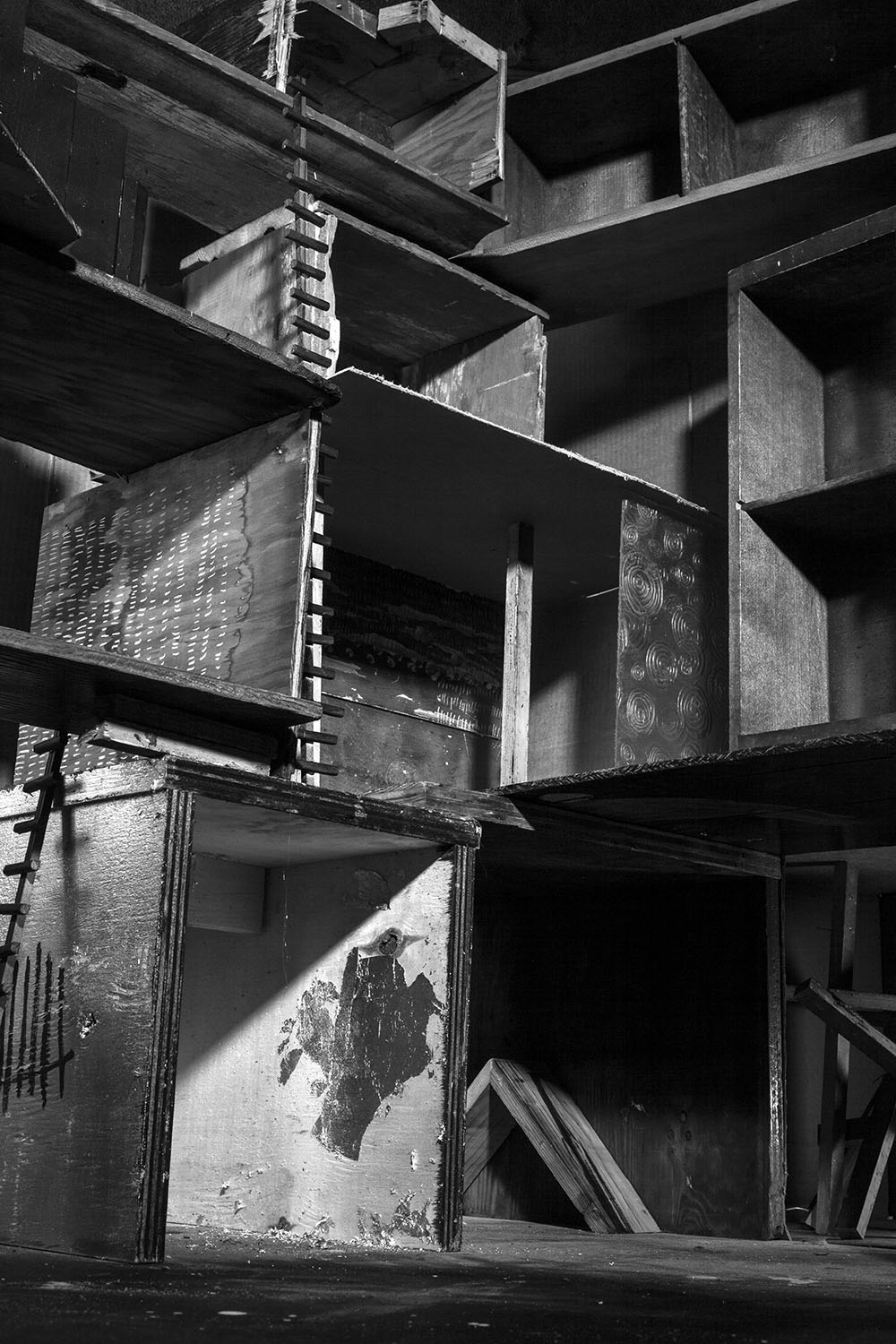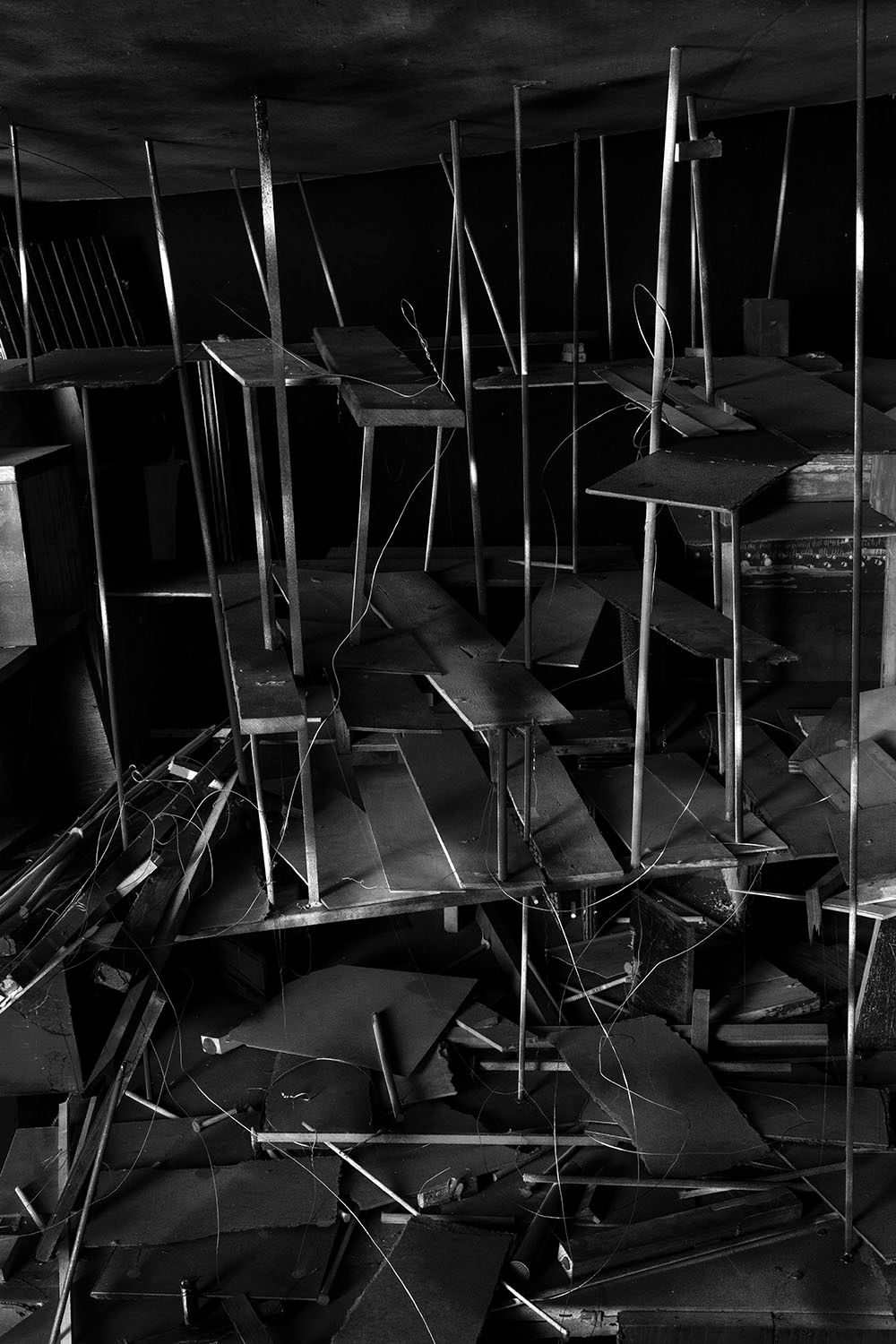About the Photographer
Sawyers, Ross
American, b. 1979
Ross Sawyers constructs and photographs small-scale models of imagined dwellings. Preceding the 2008 housing bubble burst, Sawyers began photographing models of bare domestic interiors after noticing a dramatic increase in the number of high-density housing developments in his own community. His pictures mimic the uniform living spaces commonly seen in new construction, but he adds exaggerated architectural elements to suggest the ways that close proximity living demands certain sacrifices in domestic comfort.
His early photographs imagine fictitious rooms with layouts that appear to accommodate unusually close neighboring buildings. Obtrusive walls and nearby windows interrupt the appeal of pristine hardwood floors, crown molding and catalog colored walls. By constructing model rooms that amplify the design compromises common in new residential developments, Sawyers highlights a tension between housing as a sellable commodity and the home as place of solitude and retreat. He suggests that our notions of privacy and community are continually pushed and reformed by developers as they build the structures that we inhabit and call home. Later constructions show interiors that look unfinished or deserted. Emptiness pervades in each picture, mirroring stories of loss and vacancy that have become characteristic of the housing downturn.
Viewed altogether, Sawyers’ works in this series follow the psychology of a boom-and-bust era in residential housing that continues to play out today. He challenges the function of the model as an ideal to be copied, using miniature structures to highlight the anxieties and frustrations that many home-buyers and renters have encountered in the fast-changing real-estate market. This is evident not only in the models Sawyers builds, but also in his choice to present his final works as photographs. Photography’s tenuous relationship to truth and reality is a fitting metaphor for the illusions of property value that first propelled the ongoing recession. Like the eventual collapse of the housing market, as you study Sawyers’ works, a false construction eventually emerges.
In The Future Isn’t What It Used to Be, Sawyers continues themes of interrupted or fragmented homes, but this time crafting spaces that exist in an imagined future where the status quo has been obstructed. The walls hold tally marks representing the individuals who keep track of time without the conveniences of technology. Ladders are formed out of scraps, propped against rickety planks of plywood. Sawyers states: “People who used to think that they could count on their home and family as the epicenter of power have felt the risks that are in the air—risks levied by the inflation and crash of the housing market, climate change, overpopulation, the rise of digital technologies, and the fall of an entire economy predicated on their predecessors. This project invites reflection upon the different scales and timelines of home, as well as the varied emotional registers and resonances—longing, nostalgia, repulsion, fear, or even indifference—that I hope to evoke through my photographs.”
Ross Sawyers completed a BFA in Photography and New Media from the Kansas City Art Institute (2002) and an MFA in Interdisciplinary Visual Arts from the University of Washington in Seattle (2007). His work has been widely shown in numerous group exhibitions, as well as a solo show at Platform Gallery in Seattle, WA (2007). Other notable honors include the Crystal Apple Award from the Society for Photographic Education (2007) and a nomination for the John Gitmann Fellowship (2008). Sawyers lives and works in Chicago, where he is the Chair of Photography at Columbia College Chicago.




